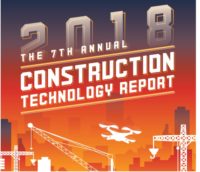Commentary: Lean Construction Increasing Its Industry Profile
Lean construction is the application of lean thinking, principles and tools to the lifecycle of capital construction. Although the International Group for Lean Construction (ILGC) coined the term at its first meeting in 1993, widespread implementation of lean techniques is still not common in the industry. However, according to the findings of the report, this trend is changing.
The need for industry reform relates to three main areas:
1. Productivity in the U.S. construction industry has stayed level or declined since 1964.
2. Building owners are looking for increased plan predictability and price stability in the way capital projects are delivered.
3. As more owner organizations practice lean in their core businesses, they are writing into their requests for proposal requirements that lean practices extend into their capital construction projects.
Evolution of the Process
Lean construction evolved from the lean methodology used in various industries, including manufacturing, health care, service and retail. Lean’s aim is to deliver maximum value and quality to a customer, exactly how and when they want it. It relies on a foundation of continuous improvement and respect for people to eliminate waste due to variation; overburdening or stressing the people, processes or system; and the wastes commonly associated with transportation, waiting, overproduction, defects, inventory, motion, excess processing and ineffectively utilizing people.
During a construction project, change orders, schedule delays and rework are some indicators of these wastes. Lean principles are customer value, value-stream analysis, flow, pull, perfection and everyday improvement.
Founded in 1997 by Glenn Ballard and Greg Howell, the Lean Construction Institute exists to reform the way the industry delivers capital projects. Lean project delivery views projects holistically, rather through than the traditional transactional method.
A LCI 2012 report says: “Applied to construction, lean changes the way work is done throughout the delivery process. Lean construction extends from the objectives of a lean production system—maximize value and minimize waste—to specific techniques and applies them in a new project delivery process. As a result:
• The facility and its delivery process are designed together to better reveal and support customer purposes. Positive iteration within the process is supported and negative iteration reduced.
• Work is structured throughout the process to maximize value and to reduce waste at the project delivery level.
• Efforts to manage and improve performance are aimed at improving total project performance because it is more important than reducing the cost or increasing the speed of any activity.
• “Control” is redefined from “monitoring results” to “making things happen.” The performance of the planning and control systems are measured and improved.
The reliable release of work between specialists in design, supply and assembly assures value is delivered to the customer and waste is reduced. Lean construction is particularly useful on complex,
uncertain and quick projects. It challenges the belief that there must always be a tradeoff between time, cost and quality.”




